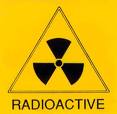Nuclear Tuna and Media Trivialization: The Risk of Radioactive Tuna from the Fukushima Nuclear Disaster

NPR shouldn’t trivialize the risk of radioactive tuna from the Fukushima nuclear disaster.
Yesterday, National Public Radio (NPR) ran a story asserting that cesium-137 from the Fukushima nuclear accident found in Bluefish tuna on the west coast of the U.S. is harmless.

It is not advisable to eat Bluefin Tuna. Photo by tokyofoodcast.
It’s not harmless. The Fukushima nuclear accident released about as much cesium-137 as a thermonuclear weapon with the explosive force of 11 million tons of TNT. In the spring of 1954, after the United States exploded nuclear weapons in the Marshall Islands, the Japanese government had to confiscate about 4 million pounds of contaminated fish.
Radiation from Fukushima spread far and wide. Like American hydrogen bomb testing, the Fukushima nuclear accident deposited cesium-137 over 600,000 square-miles of the Pacific, as well as the Northern Hemisphere and Europe. With a half-life of 30 years, cesium-137 is taken up in the meat of the tuna as if it were potassium, indicating that the metabolism holds on to it.
According to a previously secret 1955 memo from the U.S. Atomic Energy Commission regarding concerns of the British government over contaminated tuna, “dissipation of radioactive fall-out in ocean waters is not a gradual spreading out of the activity from the region with the highest concentration to uncontaminated regions, but that in all probability the process results in scattered pockets and streams of higher radioactive materials in the Pacific. We can speculate that tuna which now show radioactivity from ingested materials have been living, in or have passed through, such pockets; or have been feeding on plant and animal life which has been exposed in those areas.”
In 2001, the U.S. Agency for Toxic Substances Disease Registry noted that “…concentrations of cesium within muscle tissue are somewhat higher than the whole-body average. Cesium has been shown to cross the placental barrier of animals...”
There are several reasons why it’s not advisable to eat Bluefin tuna:
- Cesium-137 adds to the contaminant risk of harm to humans eating the Bluefin tuna, especially pregnant women and infants, who are the most vulnerable, and will for some time to come.
- Bluefin tuna is an endangered species because of over-fishing and contamination.
- Bluefin tuna accumulate other contaminants such as mercury from sources such as coal-fired power plants.
If NPR had been around in the 1950’s, would it also have trivialized the impacts of open-air hydrogen bomb testing?

